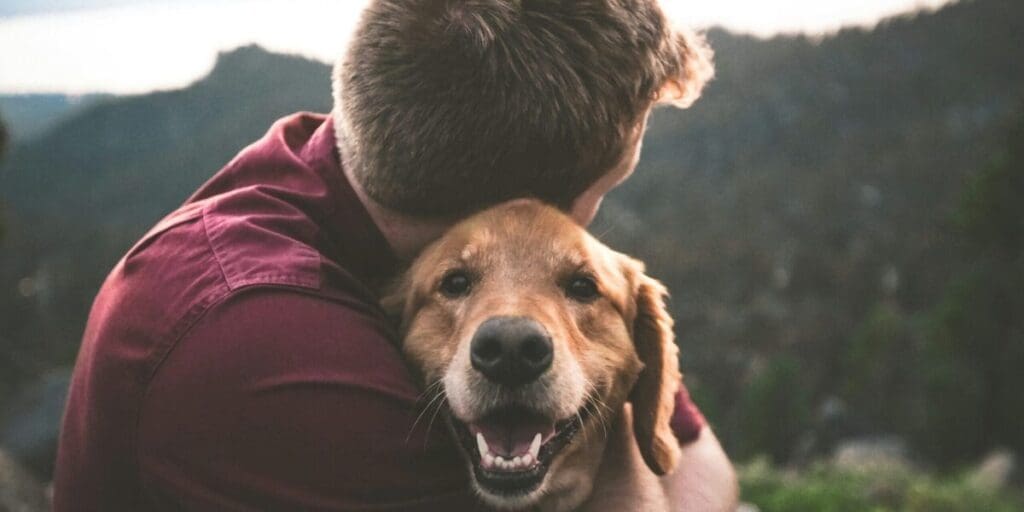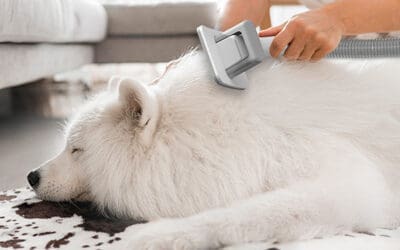Pets serve as a child’s best friend for development. They boost confidence, build relationships, and nurture responsibility. Pets enhance physical activity, promote play, and develop motor skills. They also improve communication, understanding nonverbal cues, and teaching empathy. Pets offer sensory learning experiences, broaden understanding, and stimulate development. Additionally, they help establish routines, enhance problem-solving, and encourage creativity. Discover the holistic benefits pets bring to children’s growth!
Some Key Points
- Pets boost confidence and self-esteem in children.
- They promote physical activity and motor skill development.
- Pets enhance communication skills and empathy.
- They provide sensory learning opportunities through play.
- Having pets aids in establishing routines and problem-solving skills.

Social-Emotional Benefits of Pets
Interacting with pets positively impacts a child’s social-emotional development by boosting confidence, building relationships, and nurturing a sense of responsibility. When children care for pets, they experience a growth in self-esteem as they see the impact of their actions on their furry companions. Building relationships with pets fosters a sense of trust and companionship, enhancing the child’s social skills. Through tasks like feeding and walking pets, children learn to be responsible and dependable, contributing to their emotional development. These interactions create a safe space for children to express themselves freely, reducing stress and anxiety. Ultimately, the bond formed with pets provides a source of comfort and support, enriching the child’s social-emotional well-being.
Motor and Play Development With Pets
Children’s physical development and play skills are greatly influenced by their interactions with pets, providing opportunities for movement and unstructured activities. Engaging in physical play with pets encourages active lifestyles and improves coordination. Interacting with pets promotes unstructured play, allowing children to use their creativity and imagination freely. Pets can be wonderful companions in games that involve running, jumping, and even balancing exercises, enhancing motor skills. Below is a table highlighting the benefits of physical activity and unstructured play with pets:
| Benefits of Interacting with Pets |
|---|
| Encourages physical activity |
| Promotes unstructured play |
| Enhances motor skill development |
Communication Skills Through Pet Interaction
Engaging with pets can greatly enhance your child’s communication skills through various interactive activities. Through pet therapy, children learn valuable lessons in animal communication. Talking to pets helps them develop verbal communication skills, while understanding nonverbal cues from pets enhances their ability to interpret body language. Pets can also serve as excellent listeners, providing a safe space for children to practice reading aloud or sharing their thoughts without fear of judgment. Additionally, caring for pets teaches children the importance of clear communication and empathy, as they learn to communicate with their furry friends in special ways that strengthen their bond. Overall, interacting with pets offers unique opportunities for your child to develop and refine their communication skills.
Sensory Learning Opportunities With Pets
Exploring sensory experiences with pets can broaden your child’s understanding of the world around them. Sensory exploration through interactions with pets offers tactile experiences that can enhance your child’s learning. Pets provide opportunities for children to engage their senses during playtime, allowing them to learn about different types of touch and movement. Watching pets in action can expand your child’s sensory world, helping them develop a deeper appreciation for the environment. These experiences with pets not only stimulate your child’s senses but also contribute to their overall sensory development. Encouraging your child to explore these sensory opportunities with pets can be a fun and educational way to promote their sensory learning.
Executive Function Skills Enhanced by Pets
Establishing routines through pet care enhances your child’s vital function skills. By taking care of pets, they learn problem-solving challenges and the importance of routine establishment. As they feed, groom, and play with their furry friends, unexpected issues may arise that require quick thinking and decision-making. These experiences help them develop vital function skills like planning, organizing, and cognitive flexibility. Through caring for pets, your child learns to anticipate needs, prioritize tasks, and adapt to changing situations, all of which are essential for their overall development. Encourage them to tackle these challenges with patience and creativity, as each interaction with their pet presents an opportunity to enhance their vital function skills.
Some Closing Thoughts
To sum up, pets are truly a child’s best friend for development. They provide social-emotional support, enhance motor skills and play development, improve communication abilities, offer sensory learning experiences, and boost executive function skills. By engaging with pets, children not only learn valuable life lessons but also build empathy, trust, and a sense of responsibility. So, embrace the presence of furry companions in your child’s life and watch them flourish in all aspects of their growth and development. The benefits of kids owning pets extend beyond emotional and developmental growth; they also help foster physical activity and a deeper connection with nature. Caring for a pet encourages children to stay active through play and outdoor adventures, while also teaching them the importance of nurturing living beings. This holistic approach to growth makes pets invaluable partners in a child’s journey toward becoming a well-rounded individual.
Some Questions & Answers

Can Having a Pet Help Children With Special Needs or Disabilities in Their Development?
Having a pet can greatly benefit children with special needs or disabilities in their development. Therapy animals assist in enhancing social skills, while pets offer emotional support and aid in sensory integration. Interacting with pets can provide a sense of comfort and companionship, fostering a nurturing environment for growth and learning. Pets can play an important role in helping children with special needs or disabilities navigate the world around them with increased confidence and resilience.
How Can Pets Help Children Cope With Feelings of Loneliness or Isolation?
Pets can provide emotional support and companionship, helping you cope with feelings of loneliness or isolation. They offer mental health benefits by reducing stress and anxiety. Through interactions with pets, you can improve your social skills and feel a sense of connection. Having a pet can bring joy and comfort, fostering a sense of companionship that can positively impact your well-being and help you navigate challenging emotions.
Are There Specific Types of Pets That Are Better for Different Aspects of Child Development?
When choosing pets for different aspects of child development, consider factors such as pet therapy for emotional support or animal-assisted activities for social skills. Dogs can provide companionship and encourage physical activity, while smaller pets like guinea pigs can teach gentle handling and nurturing. Cats may help with relaxation and empathy skills. Tailor the pet choice to your child’s needs and interests for a well-rounded developmental experience.
What Role Can Pets Play in Teaching Children About Empathy and Compassion?
Pets, like therapy animals, provide emotional support. They teach you empathy by responding to your care. Responsibility for a pet helps you understand compassion. Social skills grow as you bond with your pet, learning to communicate and understand its needs. By nurturing a pet, you learn to think beyond yourself, developing empathy and compassion that extend to others.
How Can Parents Ensure That the Relationship Between Their Child and Pet Remains Positive and Beneficial for Both Parties?
To guarantee a positive and beneficial relationship between your child and pet, focus on pet training and setting boundaries early. Teach your child how to respect the pet’s needs and signals. Encourage gentle interactions and supervise playtime. Establish routines for feeding and care. Show your child the importance of patience and understanding. By fostering a loving and respectful bond, both your child and pet can thrive together.



























